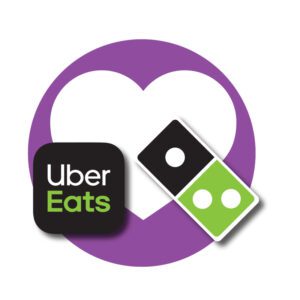On July 12, the Wall Street Journal declared Ann Arbor–based Domino’s Pizza “today’s hottest stock.” Investors encouraged by the news of a “global agreement” to list the pizza giant’s menus on Uber Eats had driven its stock up 11 percent, its biggest increase in two years.
 Until now, Domino’s had staunchly resisted Uber Eats and other third-party delivery companies. But, the Journal noted, “Domino’s in April said its U.S. delivery same-store sales for the three months ended March 26 declined 2 percent from last year.” In June, the company CFO Sandeep Reddy told Restaurant Business Magazine that when “the incrementality of the opportunities is greater than the risk then that calculus leads us to partner with a third-party aggregator.” After the announcement, CEO Russell Weiner told the Journal that “the food-delivery companies had developed loyalty programs that were keeping consumers from ordering directly from Domino’s, hurting the chain’s reach.”
Until now, Domino’s had staunchly resisted Uber Eats and other third-party delivery companies. But, the Journal noted, “Domino’s in April said its U.S. delivery same-store sales for the three months ended March 26 declined 2 percent from last year.” In June, the company CFO Sandeep Reddy told Restaurant Business Magazine that when “the incrementality of the opportunities is greater than the risk then that calculus leads us to partner with a third-party aggregator.” After the announcement, CEO Russell Weiner told the Journal that “the food-delivery companies had developed loyalty programs that were keeping consumers from ordering directly from Domino’s, hurting the chain’s reach.”
It’s significant that under the deal, Uber Eats will only be taking orders—Domino’s drivers will still deliver them to customers. It also will get access to some customer data that third-party services don’t normally share.
Starting this fall, customers in four U.S. markets will see Domino’s menu on the Uber Eats and Postmates apps, with a nationwide rollout expected by year’s end. The deal is exclusive through 2024, when Domino’s will have the option to list on other apps.
While delivery has struggled, Domino’s takeout business is growing rapidly: In his first-quarter earnings call, Weiner said carryout orders were up 13.4 percent. It helped that Domino’s had offered pickup customers $3 credits on future orders—which it framed as “tips” for their time.